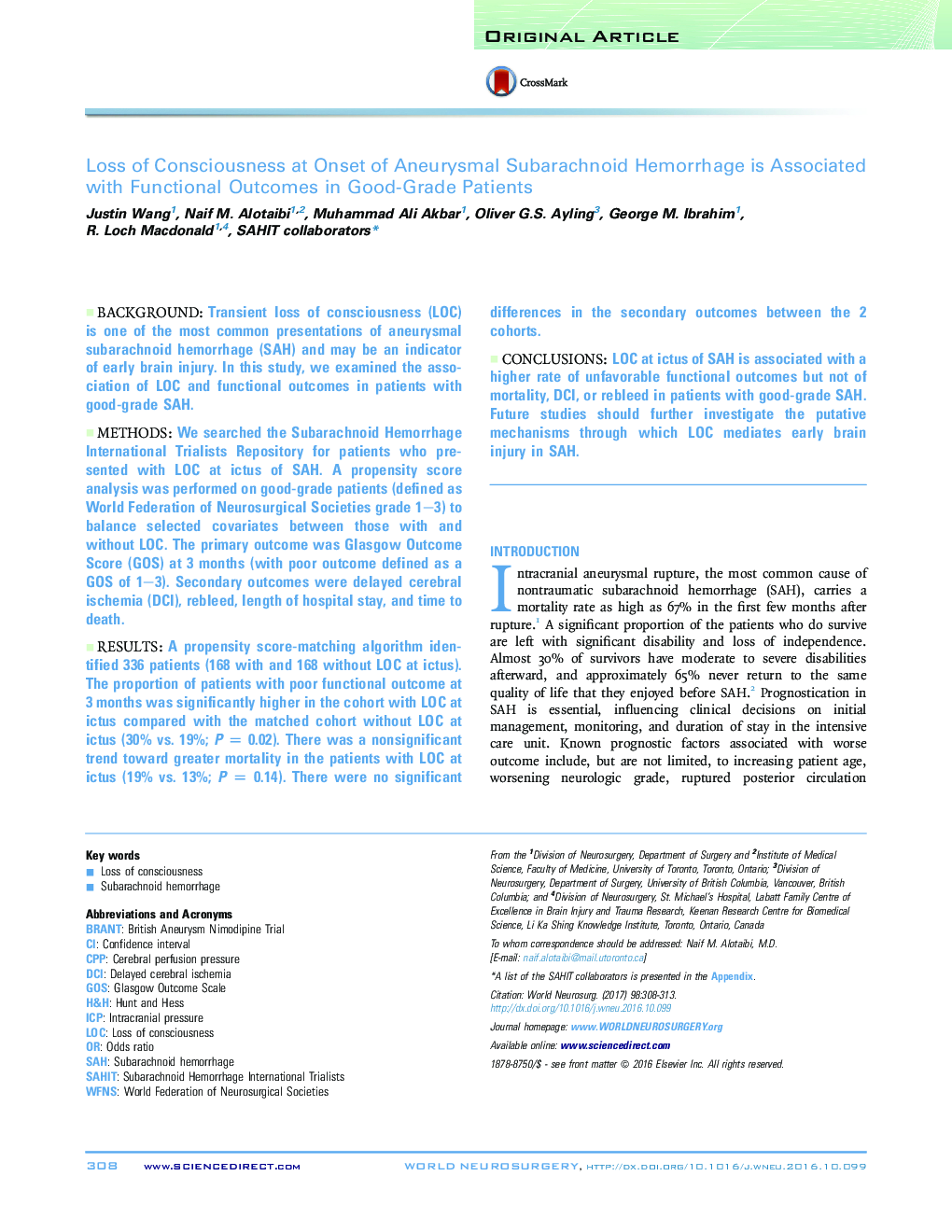| Article ID | Journal | Published Year | Pages | File Type |
|---|---|---|---|---|
| 5634937 | World Neurosurgery | 2017 | 6 Pages |
BackgroundTransient loss of consciousness (LOC) is one of the most common presentations of aneurysmal subarachnoid hemorrhage (SAH) and may be an indicator of early brain injury. In this study, we examined the association of LOC and functional outcomes in patients with good-grade SAH.MethodsWe searched the Subarachnoid Hemorrhage International Trialists Repository for patients who presented with LOC at ictus of SAH. A propensity score analysis was performed on good-grade patients (defined as World Federation of Neurosurgical Societies grade 1-3) to balance selected covariates between those with and without LOC. The primary outcome was Glasgow Outcome Score (GOS) at 3 months (with poor outcome defined as a GOS of 1-3). Secondary outcomes were delayed cerebral ischemia (DCI), rebleed, length of hospital stay, and time to death.ResultsA propensity score-matching algorithm identified 336 patients (168 with and 168 without LOC at ictus). The proportion of patients with poor functional outcome at 3 months was significantly higher in the cohort with LOC at ictus compared with the matched cohort without LOC at ictus (30% vs. 19%; PÂ = 0.02). There was a nonsignificant trend toward greater mortality in the patients with LOC at ictus (19% vs. 13%; PÂ = 0.14). There were no significant differences in the secondary outcomes between the 2 cohorts.ConclusionsLOC at ictus of SAH is associated with a higher rate of unfavorable functional outcomes but not of mortality, DCI, or rebleed in patients with good-grade SAH. Future studies should further investigate the putative mechanisms through which LOC mediates early brain injury in SAH.
